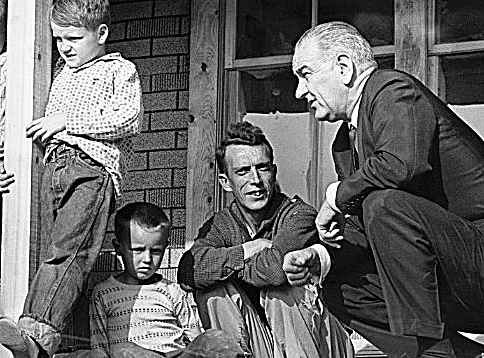Update: To protect and to lurk .. and to read
 UPDATE (10/1/14): Today, I drove by the Troy PD patrol car spot I mentioned in the following post written last month. There’s a cruiser there again, in the same low (if any) crime area. This time, the officer inhabiting the vehicle isn’t just idly watching traffic go by while nefarious activities go on in some of the surrounding blocks. He wasn’t watching the street at all. I circled around the block and checked to be sure what I saw the first time was accurate. Yep. He was busy reading. Oh, and protecting and defending, too, I’m sure.
UPDATE (10/1/14): Today, I drove by the Troy PD patrol car spot I mentioned in the following post written last month. There’s a cruiser there again, in the same low (if any) crime area. This time, the officer inhabiting the vehicle isn’t just idly watching traffic go by while nefarious activities go on in some of the surrounding blocks. He wasn’t watching the street at all. I circled around the block and checked to be sure what I saw the first time was accurate. Yep. He was busy reading. Oh, and protecting and defending, too, I’m sure.
TROY — I had to pay a visit to an Adirondack Tire Center in Troy’s Lansingburgh section today. Not much of a way to begin a commentary, but it’s the reason I noticed what I noticed. A Troy Police Department cruiser sitting in the parking lot of an abandoned gas station across the street.
I had seen the same thing while driving down that same street a day earlier. Under many circumstances it would be an unremarkable sight either time. This time it caught my eye, however, because I remembered Chief John Tedesco several weeks ago announcing an expanded police presence in the wake of numerous outbreaks of arson, shootings and stabbings in that city neighborhood.
If so, this particular deployment was a waste of the cop’s time and my tax money.
That stretch of 2nd Street is anything but a hotbed of illicit activity. It’s a commercial strip, just south of Powers Park. A smarter place to be would be about four blocks north and one block east. That’s where you’re getting into the sections of open-air drug markets and plywood-studded deteriorating buildings that seem to attract arsonists and other assholes.
Unless the intent of stationing a patrol car on that quiet section of 2nd Street was to catch the occasional speeder or scare off any out-of-towners headed deeper into the ‘Burgh for a drug buy, it doesn’t make much sense. We already have too many spots in the City of Troy where patrol cars are stationed to catch errant motorists while ignoring obvious drug activity in areas the police have, in effect, surrendered to crooks.
For a variety of blogs, guides and websites for readers of all interests, go to Bill Dowd.com.
CDPHP reaching down deeeep .. into our pockets
A bulky envelope, bearing the green logo of the Capital District Physicians Health Plan, arrived in my mailbox today. It contained the dreaded “Annual Notice of Changes and Evidence of Coverage” for those of us enrolled in the insurance company’s Medicare program — formally known as “CDPHP Choice Rx (HMO).”
That’s a lot of letters that could more simply be put this way: You’re Screwed. Again.
In terms I’ve stripped of all the CDPHP verbiage meant to soften the blow, here’s what CDPHP tells us is going to happen to the fees we pay, as of the beginning of 2015:
• Medicare Part B chemotherapy drugs: from zero to $35.
• Medicare Part B other drugs: from zero to $35.
• Monthly premium: up 18%.
• Maximum out-of-pocket amount: up 60%.
• Ambulance services: up 250%.
• Emergency services: up 30%.
• Inpatient hospital care: up 82%.
• Inpatient mental health care: up 82%.
• Mental health services: up 20%.
• Occupational therapy services: up 67%.
• Other health care professional services: up 25%.
• Outpatient ambulatory surgery: up 100%.
• Outpatient laboratory tests: up 25%.
• Outpatient diagnostic radiology (X-rays, CT, MRI, radiation therapy): up 67%.
• Outpatient hospital services: up 300%.
• Outpatient susbstance abuse services: up 20%.
• Physical therapy and speech-language pathology services: up 67%.
• Podiatry-Medicare covered: up 20%.
• Primary care physician services: up 33%.
• Psychiatric services: up 20%.
• Renal dialysis: up 20%.
• Routine eye exams: up 20%.
• Routine hearing exams: up 20%.
• Skilled nursing facility: up 29%.
• Doctor office visits (primary care): up 33%.
• Doctor office visits (specialists): up 20%.
• Specialists services: up 20%.
• Worldwide emergency coverage: up 30%.
In addition, the co-pays for a one-month supply of prescription drugs is going up this way:
• Tier 2 (non-preferred generic drugs): up 37.5%.
• Tier 3 (preferred brand drugs): up 12.5%.
• Tier 4 (non-preferred brand drugs): 5.6%.
• Tier 5 (specialty drugs): up 10%.
I can imagine that something along the same lines is going on with all other CDPHP insurance plans as well. And, perhaps with all sorts of other plans across the country. Sadly, I thought our government entities that insist on weaseling their way into every facet of our lives would have noticed this as quickly as they notice our private e-mails and images and moved to protect us from such usury. Silly me.
Grandpa William keeps on making news
The old saying “Get off your high horse” would have been bad advice for Richard III, King of England.
Since the skeleton of the fallen monarch was found buried under a parking lot in the city of Leicester, England, in 2012, scientists and others have been trying to figure out everything they can about him.
Among early conclusions they reached is that, while through history — prompted by Shakespeare’s unflattering depictions of him — Richard was believed to be a hunchback, he actually only had scoliosis. That meant that while his back was slightly curved, it would not have hindered his movement, even in battle.
The latest reported conclusion is that — surprise, surprise! — Richard probably suffered a very painful death at the Battle of Bosworth Field on August 22, 1485.
That, for the historically challenged, was a bloody affair between the forces of the Plantagenets of York — Richard’s side — and the Tudors of Lancaster. It effectively ended the Plantagenet dynasty and allowed Henry Tudor to assume rule of England under the title Henry VII.
The battle was the last time a reigning English monarch was killed in battle. Later historians dubbed the lengthy series of Plantagenet-Tudor battles as “The War of the Roses” because York’s symbol was the white rose, Lancaster’s the red rose.
I know a bit about the events of that day because I’m working, ever so slowly, on a book about it. More specifically, I’m concentrating on a history of the man who dealt the death blow to Richard, one William Gardiner, who was knighted after the battle for his services and later married one of the offspring of the Tudors.
He happens to be my 17th great grandfather.
The latest research, published in the British medical journal Lancet, says detailed examination of Richard’s bones shows evidence of of 11 injuries from weapons including daggers, swords and a long metal pole with an axe and hook that was used to pull knights off their horses.
The latter weapon, known as a halberd, was Grandpa William’s specialty. He was a broad-shouldered, powerfully-built man who in much of his life was a successful merchant, but also hired out as a mercenary halberdier and was renowned in his time for his skill with the weapon.
All historical research I’ve done supports the idea that William Gardiner was indeed the man who pulled Richard from his horse and ended his life with a stroke of the axe portion of the halberd that caved in the king’s skull, battle crown and all.
The Lancet report says scientists used computer scans, among other methods, to analyze the wounds.
“Richard was probably in quite a lot of pain at the end,” according to Sarah Hainsworth, a professor of materials engineering at the University of Leicester and one of the study authors. “Medieval battle was bloody and brutal,” she said, noting one of the skull injuries showed a blade had pierced Richard’s head.
Although Richard suffered numerous wounds, it was significant that no one has found any evidence that there were any attempts to disfigure him.
“Having evidence that the real Richard III is dead is very useful,” said Steven Gunn, an associate professor of history at Oxford University, who was not part of the research. “You don’t want somebody popping up somewhere later claiming to be the real king.”
For those who like additional details, here is an excerpt from the book “The Making of the Tudor Dynasty,” based on the writings of Jean Molinet, a chronicler from Burgundy who was at the Battle of Bosworth Field:
“Richard, so confident of victory that he was wearing his crown, could observe from a higher level along the hillside that his own personal vanguard was superior to Henry’s and decided to end the battle quickly by slaying Henry Tudor. Sir William Stanley was standing by with an uncommitted force of 3,000 men, ready to rout the losing side. Richard III spurred his horse and in quick time, with his vanguard, engaged Henry in combat.
“As Richard went for Henry to deliver his mortal blow [enter Grandpa William] one of Henry’s men, a … halberdier, intervened, knocking off Richard’s crown, then giving one mighty swing smashed Richard’s helmet into his skull.
“Seeing that their leader was slain, his vanguard began to withdraw and, immediately, Sir William Stanley ordered his men after Richard’s fleeing troops, thus ending the battle in Henry’s favor.”
Looking back, sadly, at the War On Poverty

President Johnson visiting a poor rural Kentucky family several months after announcing his “War On Poverty.”
In more than four decades as a professional journalist, I never had the experience of being a war correspondent. However, I did serve as a reporter in the War On Poverty.
It was 50 years ago this year that President Lyndon B. Johnson announced his “War On Poverty,” an extensive set of federal efforts meant to combat the curse of poverty in America’s city, suburban and rural areas.
This was a big deal for me. I had recently moved from being a sports reporter to the news side of things and wanted to see how such a sweeping, historic program would affect my newspaper’s circulation area.
So, along with a handful of fellow journalists, we set out to beat the bushes to find people and communities the War On Poverty would impact. We found plenty and dutifully interviewed, researched and then wrote about their plights and which “War” programs might best eliminate their woes.
So, how did that go?
In January, President Obama’s Council of Economic Advisers issued a “progress report” that was a jumble of conflicting statements. (One example: that “poverty in the U.S. when measured to include tax credits and other benefits has declined from 25.8% in 1967 to 16.0% in 2012. “ No mention of the three missing years – from when LBJ issued his “War” declaration in 1964 to the 1967 benchmark the Council decided to use.)
But, to me the telling paragraph in its report was this:
“The official poverty measure (OPM) has several flaws that distort our understanding of both the level of poverty and how it has changed over time. Perhaps the most significant problem with the OPM is its measure of family resources, based on pre-tax income plus cash transfers (like cash welfare, social security, or UI payments), but not taxes, tax credits, or non-cash transfers. As such it inhabits a measurement limbo between ‘market poverty’ (based on pre-tax, pre-transfer resources) and ‘post-tax, post transfer poverty’ reflecting well-being after taking into account the impact of policies directed at the poor. Several other shortcomings are more technical.”
Translated into everyday English, nobody can agree on how to measure or define poverty.
Another view of how LBJ’s dream is doing comes from The Daily Caller, a politically conservative news and opinion website. A story it published today is headlined: “Miscounting Poverty Again: The War On Poverty After Fifty Years.” As contributor Robert Rector writes (underlining has been added for emphasis):
“Today the U.S. Census Bureau released its annual poverty report. … [It] reported that 14.5% of Americans were poor in 2013. This is essentially the same rate as in 1966, two years after the War on Poverty was announced. According to Census, the country has made no real progress against poverty for more than 40 years.
“This lack of progress is remarkable. The government has spent some $22 trillion (in constant 2012 dollars) on means-tested welfare programs since the War on Poverty began. Adjusted for inflation, this is three times more than the nation has spent on all military wars combined since the American Revolution.
“Today the federal government runs more than 80 means-tested welfare programs providing cash, food, housing, and medical care to poor and near poor Americans. Last year, more than 100 million people, or roughly one in three Americans, received aid from at least one of these programs. In Fiscal Year 2013, federal and state spending on these programs came to $943 billion or around $9,000 per recipient. (These figures do not include Social Security, Medicare, or Unemployment insurance.)
“Adjusting for inflation, annual welfare spending is 16 times greater today than when the War on Poverty began. How can government spend so much while the poverty rate remains unchanged? The answer is, it can’t. … “
If you want to read the rest of Rector’s analysis, you can find it here.
As for that young journalist back in 1964, he still had enough starry-eyed idealism that made him think his government could do great things, just as it had in galvanizing a nation to lead the battle to defeat Germany and Japan and their minions in World War II, then push this vast country into the modern era.
The former journalist of today knows better. And, that is a sad realization.
For a variety of blogs, guides and websites for readers of all interests, go to Bill Dowd.com.
Played for a sucker, one last time

This is me with Danny Sarmiento, our Honduran youngster brought to Albany for lifesaving cardiac surgery, He’s clutching a personalized Vermont Terry Bear we presented to him.
The latest charity to which I contributed was the new National WWII Museum. A rather hefty contribution, in fact, in honor of my dad who was killed in action in France in WWII.
Since sending the organization a check, it has inundated me with endless requests for more money and pushing me to buy all sorts of useless tchotchkes. It is safe to say the organization has spent more in mailings and brochures sent to me than I contributed.
This, regretably, is not unusual. Numerous other organizations that have been recipients over the years of my contributions meant as supportive of their programs and goals have done the same mindless thing. I can site such groups as the Eastern Paralyzed Veterans, Colonial Williamsburg Foundation, Capital City Rescue Mission, the Muscular Dystrophy Foundation, the American Red Cross and on and on.
By contrast, I also contribute significant sums through Rotary International, the 1.2 million-member global public service organization of which I long have been a member. In all the years I have done so, I have never been targeted for continual arm-twisting for more money.
It has been said insanity is doing the same thing over and over and expecting different results. So, I am proclaiming my mental health to be strong and my charitable contributions from, now on to be limited to Rotary projects, be they local or international.
Locally, our Rotary club — Southern Rensselaer County, in my case, of which I am the current president — supports family service organizations, Boy Scouts, college scholarships, food pantries, literacy, the Gift of Life organization that brings children here for lifesaving cardiac surgery, and other undertakings. Globally, we support the ongoing battle to eradicate polio, provide ShelterBoxes which bring temporary shelters, tools, water purifying equipment, first-aid supplies and similar materials to areas ravaged by the forces of nature.
When I see the direct result of the hard personal work and generosity of my fellow Rotarians that does only good rather than becoming a catalyst for incessant fundraising, I know that decision is a proper one.
The most recent example is the $11,000 by club of fewer than 30 members raised to bring a Honduran youngster to Albany for lifesaving cardiac surgery under the auspices of the Gift of Life program. Little Danny Sarmiento is an example of what can be accomplished without wasting money on browbeating and annoying people who want only to help.
For a variety of blogs, guides and websites for readers of all interests, go to Bill Dowd.com.
Meanwhile, in our universe …
 We Americans have such tunnel vision when it comes to measuring things only by our standards.
We Americans have such tunnel vision when it comes to measuring things only by our standards.
Case in point. When it was announced that uninjured passengers involved in the Italian cruise ship disaster would be getting a payment of $14,460 plus ticket refunds, several TV news talking heads said dismissively that they couldn’t understand how such an “odd” number had been determined.
Well, that’s because they were using U.S. dollars, whereas the cruise line had announced an 11,000 Euro payment, a nice round figure.
See, we’re really not the center of the universe.
Why soft drinks and food stamps don’t mix
 As I stood in the checkout line at my local supermarket the other day, mentally complaining about the continually rising prices of food, I noticed a couple ahead of me piling up cigarettes and beer on the conveyor belt. It caught my attention because they had been paying for their groceries with food stamps supported by your tax dollars and mine. That left them plenty of cash for the beer and smokes.
As I stood in the checkout line at my local supermarket the other day, mentally complaining about the continually rising prices of food, I noticed a couple ahead of me piling up cigarettes and beer on the conveyor belt. It caught my attention because they had been paying for their groceries with food stamps supported by your tax dollars and mine. That left them plenty of cash for the beer and smokes.
Ah, the cradle-to-grave welfare system. Why use your money for the basics of life when someone else’s money will get them for you? In effect, you are buying their drinks and smokes.
There are, of course, some people who can’t exist without assistance, but I see so many examples of people simply milking the system — put bluntly, stealing money from my pocketbook — I have less and less sympathy all the time.
Just this week, the partial collapse of an old brick residential building locally forced tenants of an apartment to find accommodations elsewhere. I felt bad for them at first. Then it was revealed that the building was Section 8 housing in which a big chunk of the rent is paid by, guess who?, you and me through our taxes.
On the surface that’s alright because some people need such assistance. But, only family members are allowed to reside in each unit and their total income must be below a certain level to qualify. It turns out one of the occupants was the boyfriend of the mother of the family, not a legal family member. Plainly put, this lout and loutess were jobbing the system to get cut-rate rent for her and rent-free housing for him while other members of the community whose taxes are supporting them are worrying about making their own rent or mortgage payments.
These are far from isolated cases. When they keep popping up generation after generation, I root for some tighter oversight of welfare programs so the truly needy are aided and the truly cheating are exposed. Thus, I was thrilled when I recently heard Mayor Michael Bloomberg was petitioning the federal government to allow New York City to prohibit food stamp recipients from using the handouts to purchase soft drinks. A small step, but better than no step, unless you’re among the soft drink makers/distributors/sellers and their cohort (snack food manufacturers, for one) already whining about the proposal.
Why is this a positive step for society at large? Besides the obesity problem, to which sugary drinks contribute mightily, take a look at the numbers.
There are 1,700,000 New Yorkers getting food stamps. That is roughly equal to the combined entire populations of Vermont, Wyoming and Washington, DC. If each food stamp recipient bought just 1½ soft drinks daily, that would come to about $2,500,000 a day, or $76,500,000 a month of your money being spent. That last figure exceeds the annual gross state product of each of 13 states: Alaska, Delaware, Hawaii, Idaho, Maine, Montana, New Hampshire, North Dakota, Rhode Island, South Dakota, Vermont, West Virginia and Wyoming. Perhaps you’re beginning to get an idea of the enormity of the topic.
By the way, if you think my figure of 1½ soft drinks a day to make my case is too high, consider that all available data puts the average American’s soft drink consumption at 3 quarts per week. We’re the largest soft drink consuming nation in the world. And you and I are buying the sodas for a lot of those people.
Sanitizing literature a dirty business
 The current heated debate over befouling Mark Twain’s “The Adventures of Huckleberry Finn” by replacing the word “nigger” with “slave” isn’t the first such instance of weak-kneed response to real or manufactured sensibilities. Illustrative of how ludicrous the debate itself has become is the fact that the word in question is not uttered on radio or TV shows and not printed in newspapers, although it frequently is heard in rap lyrics.
The current heated debate over befouling Mark Twain’s “The Adventures of Huckleberry Finn” by replacing the word “nigger” with “slave” isn’t the first such instance of weak-kneed response to real or manufactured sensibilities. Illustrative of how ludicrous the debate itself has become is the fact that the word in question is not uttered on radio or TV shows and not printed in newspapers, although it frequently is heard in rap lyrics.
Back in 2002 the New York State Education Department tried using its “sensitivity review guidelines” as a pretext for sanitizing portions of great literature before they were presented to students taking the Regents English exam. That sort of execrable evolution of the brainwashing of American children was defended on a variety of laughable levels. For example, the department’s assistant commissioner for curriculum defended messing with great writers’ work by insisting, with tortured logic, that “even the most wonderful writers don’t write literature for children to take on a test.”
At the time, as a columnist for the Times Union, I noted that rather than using classic literature as a springboard for thought and discussion — two things the sanitizers apparently feared they have failed to educate students to handle — such blockheads think it is within their purview to distort, deconstruct and otherwise demean literature to suit some moronic “sensitivity” guidelines they’ve dreamed up. Political correctness run further amok. Cathy Popkin, the Lionel Trilling professor of humanities at Columbia University, said it best at the time when she called such editing dishonest and “the practice of fools.”
If the public allows such antics as the word-swap in Twain’s work to continue without a loud and sustained outcry, what next? Stories about Jews by Nobel winner Isaac Bashevis Singer stripped of any reference to Jews because some people use the term as a derogatory one? If we don’t put a stop to these efforts to recreate reality in a version only the fools can stomach, we might wind up with “editing” such as these examples I was able to whip up in just a few minutes:
“The Merchant of Venice,” by William Shakespeare, Act 2, Scene 3:
Original: “Most beautiful pagan, most sweet Jew! If a Christian did not play the knave and get thee, I am much deceived.”
Sanitized: “Most beautiful person of undecided religious persuasion, most sweet person of Semitic extraction, and I mean that in the best possible sense. If a person adhering to Judeo-Christian teachings did not play the knave and get thee, I am much deceived.”
“Alice’s Adventures in Wonderland,” by Lewis Carroll, Chapter V:
Original: “Are you content now?” said the Caterpillar. “Well, I should like to be a little larger, sir, if you wouldn’t mind,” said Alice. “Three inches is such a wretched height to be.” “It is a very good height indeed!” said the Caterpillar angrily, rearing itself upright as it spoke (it was exactly three inches high). “But I’m not used to it!” pleaded poor Alice in a piteous tone. And she thought of herself, “I wish the creatures wouldn’t be so easily offended!” “You’ll get used to it in time,” said the Caterpillar; and it put the hookah into its mouth and began smoking again.
Sanitized: “Are you content now?” said the three-inch high Caterpillar. “Well … there certainly is nothing inherently wrong with being three inches high,” said Alice. And she thought to herself, “I can understand how, in the way life has victimized him, the creature would be so easily offended.” “We all are equal in every way,” said the Caterpillar, slapping on another transdermal nicotine patch.
“War of the Worlds,” by H.G. Wells, Book 2, Chapter 8:
Original: “The streets were horribly quiet. I got food — sour, hard, and mouldy, but quite eatable — in a baker’s shop here. Here I came once more upon the black powder in the streets and upon dead bodies. I saw altogether about a dozen in the length of the Fulham Road. They had been dead many days, so that I hurried quickly past them. The black powder covered them over, and softened their outlines. One or two had been disturbed by dogs.”
Sanitized: “The streets were horribly quiet. I got food … in a baker’s shop here. Here I came once more upon the … powder in the streets … and … I saw … black … dogs.”
So proud of you, hon
 What is it about pro athletes and precocious actresses and singers who love to procreate all over the place?
What is it about pro athletes and precocious actresses and singers who love to procreate all over the place?
Have they never heard of (a) birth control, (b) marriage, (c) self-restraint, or, at least (c) respect for the kids they’re going to usher into the world?
The latest breathless announcement lapped up by the paparazzi, TMZ, gossip columnists and other barnacles on society is that actress Natalie Portman, 29, is pregnant and not married, but thrilled about her situation. In a statement to Entertainment Weekly mag, she gushed:
“I have always kept my private life private, but I will say that I am indescribably happy and feel very grateful to have this experience.”
Oh, did I mention that she’s also in the middle of promoting the hell out of “Black Swan,” her latest movie?



